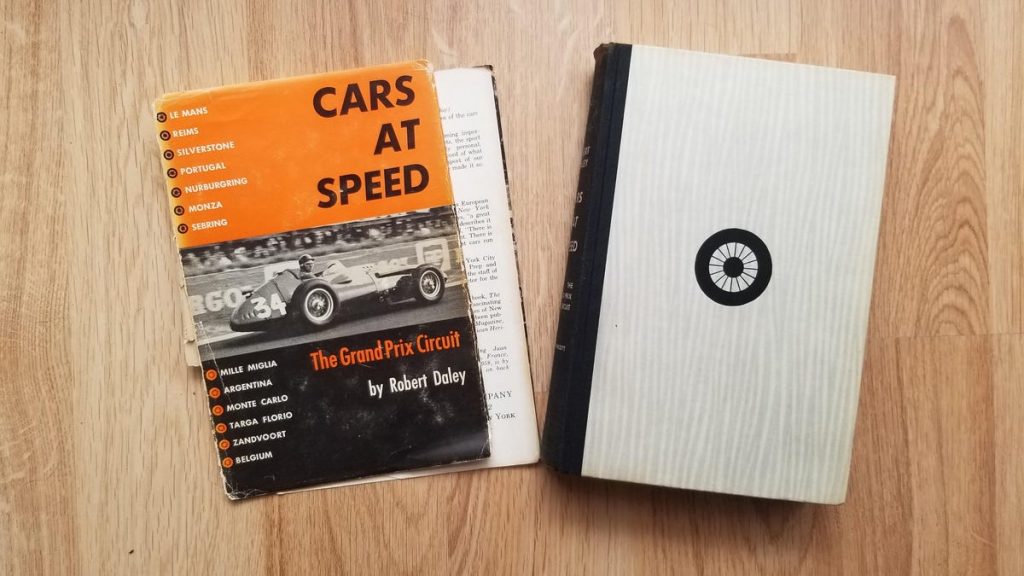Cars at Speed Is a Strange Reminder of Racing's Constant Evolution

Photo: Elizabeth Blackstock
When I think of Holland’s Zandvoort Circuit, I almost undoubtedly think of the deaths of Piers Courage and Roger Williamson. When I think of the 24 Hours of Le Mans, I think of the reverence that drivers have for the event, of the immense challenge the event provides. So, while reading 1961’s Cars at Speed: The Grand Prix Circuit by Robert Daley, it was almost surreal to see Zandvoort described as one of the few safe, death-free circuits on the calendar, or to hear that Le Mans is universally detested by drivers.
G/O Media may get a commission
Daley’s book was published in early 1961, so the most up-to-date information is drawn from the 1960 Grand Prix season — which, for Daley, encompasses World Championship events for both Formula 1 and endurance racing. It’s organized as an event-by-event recap of iconic events like the Mille Miglia or the French Grand Prix, and Daley offers a little bit of history about each event, a small profile of a driver (or multiple drivers) associated with that event, notable years or events in the context of motorsport history overall, and Daley’s impressions of various tracks that have hosted each event (for example, the French Grand Prix had been held at Reims and Le Mans, in addition to other circuits).
There’s a very obvious romanticism in this book, which I found fascinating in the context of racing history. By 1960, Daley was already one of many people lamenting the fact that racing was getting too sterilized, that drivers were too boring, that cars were too technologically advanced. He’s critical of early racing endeavors, yes, but it seems that he also deeply misses something of the inter-war motorsport. As an example, here’s a brief excerpt from Daley’s chapter on the Targa Florio:
The Targa Florio was in the beginning, and is now to a lesser extent, not so much man against man, as man pitting his machine against the worst Sicily might do to it. It was man in a wilderness. Did he have enough resourcefulness, enough stamina, to overcome the dust, the head, the battering of the roads, the precipitous plunges down mountainsides, the agonizing sputtering crawl up steep slopes — the doubt if the car would make it at all? […]
The Targa was not a race, it was an adventure. Some believed it the greatest adventure in motor racing. It was not a race of exhilarating speeds such as a Grand Prix at Reims; bravery did not count for very much. It was 1924 before the Targa’s average got over forty mph., and even in 1960 an average of fifty-eight mph was good enough to win. Sixty mph seems to be an unattainable dream for the Targa. At such speeds it is relatively difficult for a man to hurt himself, and so it was was, and may always be, a race favoring not so much the brave man s the man with the soul of an adventurer. It is no place for a sprinter; it is for a man who loves to pit himself against the country.
G/O Media may get a commission
Wear your fandom on your sleeve.
MobyFox’s officially-licensed bands and custom watch faces are homages to fandoms spanning decades—from The Beatles, to Black Panther.
For Daley, true motorsport takes place on the streets of cities or the wild roadways of European countryside. Places like Silverstone or Sebring are farces in his eyes, places where the standard fans can’t measure speed against the landmarks that they could theoretically drive past in a day. Fast, flat-out circuits like Le Mans are bores — events that exist more as a mechanical feat than anything else. Drivers, he says, hate those kinds of events. They prefer the technical challenge of Lisbon, the constant challenge of the Nürburgring.
It’s a gorgeous book, and even in its romanticism, it seems to be conscious of itself. It highlights the inevitable politics of motorsport, the reasons why some circuits are better than others, the cultural differences between American racers and European racers. It features quotes from drivers and opinions from Daley. It critiques tragedy, but it recognizes the delicate balance between pushing for more speed and maintaining safety. It’s dated, yes — but it’s exactly the kind of book I’d love to write.



